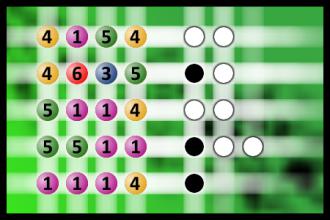Find the right combination
The computer chose a secret code (sequence of 4 digits from 1 to 6). Your goal is to find that code. Black circles indicate the number of hits on the right spot. White circles indicate the number of hits on the wrong spot.
Money Is No Object
A doctor tells a rich old man that he's going to die if he doesn't get a new heart soon. The old man tells the doctor to search the world for the best heart available, money is no object. A few days later the doctor calls the old man and says he has found three hearts but they are all expensive. The old man reminds the doctor that he is filthy rich and implores him to tell him about the donors they came from.
'Well, the first one belonged to 22 year old marathon runner, never smoked, ate only the most healthy foods, was in peak condition when he was hit by a bus. No damage to the heart, of course. But it costs $100,000!'
The old man waving off the last part about the cost asks the doctor to tell him about the second donor. 'This one belonged to a 16 year old long-distance swimmer, high school kid. Lean and mean. Drowned when he hit his head on the side of the pool. That heart'll set you back $150,000!'
'Okay,' said the old man, 'what about the third heart?'
'Well this one belonged to a 58 year-old man, smoked three packs of cigarettes a day, weighed over 300 pounds, never exercised, drank like a fish... this heart is going for $500,000!!!'
'Five-hundred grand?!?!', the old man exclaimed, 'why so expensive?'
'Well', said the doctor, 'this heart belonged to a lawyer... so it was never used!'

